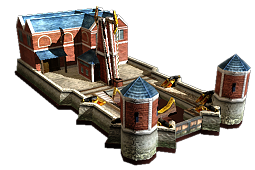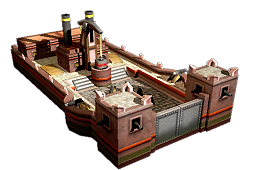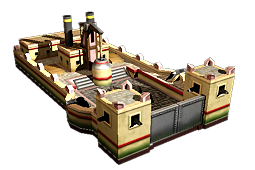Steam Drydock (ETW building)
| Steam Drydock | |||||||
|---|---|---|---|---|---|---|---|
| Category: | Port - Navy | ||||||
| Level: | 3 | ||||||
| Turns to build: | 5 | ||||||
| Building cost: | 7000 | ||||||
| |||||||
| Requires | |||||||
| Drydock | |||||||
| Technology | |||||||
| Steam Engine | |||||||
A steam drydock is a magnificent achievement of an industrializing nation: a manufactory for ships without equal!
The kind of beam engines used to pump water around a canal system (and drain mines) can drain a drydock efficiently. Using steam to power these engines is an obvious step, but once steam engines are in a dockyard their use goes far beyond pumping seawater around.
They can be used to drive sawmills, lathes, even block-making machines and as the lifting power for dockside cranes. The efficiency gains – admittedly with some new risk of fire, as the main shipbuilding material is wood – are impressive!
The scale of the military-naval industry could be huge in maritime nations, even discounting civilian yards. The British Royal Navy dockyards were the largest industrial organisation in the world during the 18th Century, and could make every part of a warship from a mast to a nail; guns were the exception, as they came from the Board of Ordnance. The ropewalk at Chatham, Kent, produced anchor ropes and was the longest brick building in Europe when constructed. It is still producing high quality ropes for ships today. The dockyards were so important that damaging them by fire or explosion carried the death penalty – something not actually repealed until 1971 (two years after the UK death penalty was finally abolished for murder).



